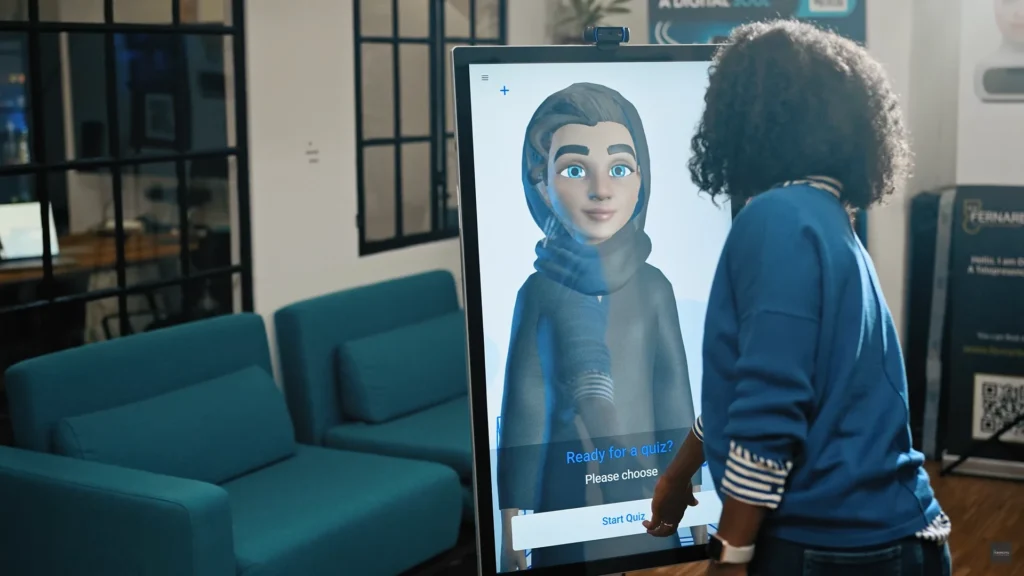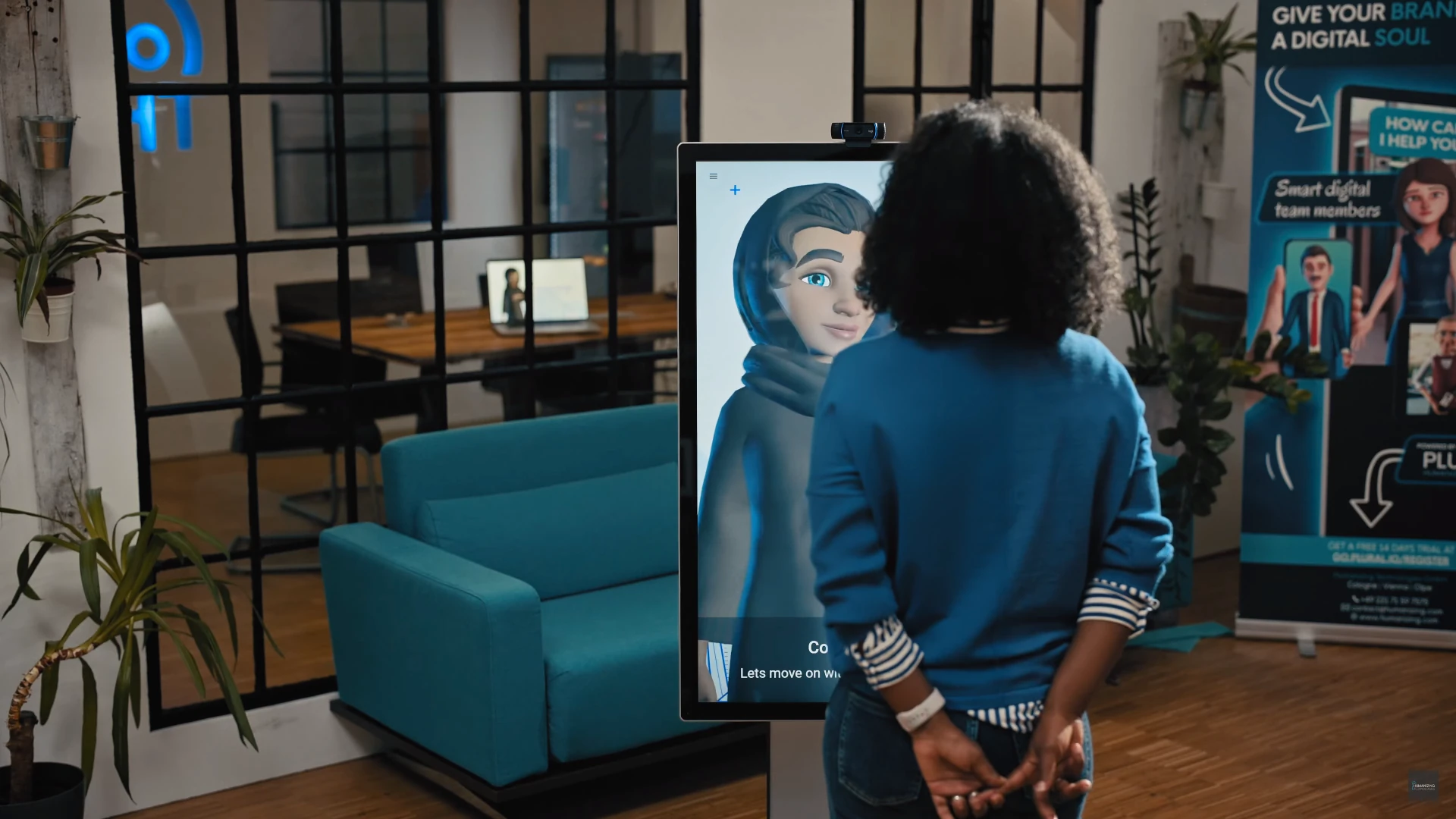In a constantly evolving technological world, AIs such ChatGPT are not the only remarkable technology. Even before the release of ChatGPT, the first Avatars appeared. These interactive characters have the potential to fundamentally change the way we interact with technology and information. In this article, we’ll dive into the basics of Avatars, reveal how they work, and take a look at the underlying technologies that bring these fascinating characters to life.
What are Avatars?
What are Avatars? From cartoon-like to 3D models, we may encounter them more often as digital companions in the future.
The first thing most people think of when they hear the word avatar is either the movie “Avatar” or the character that represents you in a video game. Yet Avatars is much more than a simple visual representation on a screen or a blue alien. It embodies a digital identity that comes to life through its interaction and communication with the real world. In the digital world, an Interactive Avatar can take a variety of forms, from a stylized graphic to a realistic 3D model (beware of the Uncanny Valley). It can embody both human traits and creative imagination. In the process, it becomes an intermediary between humans and machines.
At its core, an Interactive Avatar is a bridge between the world of data and real life. It can serve as a digital representative of a person, whether in customer service, education, or entertainment. Avatars can also be more abstract, representing a particular brand, product or idea. These interactive figures act as mediators for information and experiences. They accomplish this by responding to queries, providing answers, and engaging in human-like conversations in dialogues.
The real magic of Avatar technology is that it bridges the gap between human and machine interaction. An Avatar allows users to interact naturally with technology and computers. This form of interaction can facilitate both mundane tasks and complex requests, giving users a sense of familiarity and connection. Whether answering customer service inquiries, convey knowledge, or simply adding a human touch to the digital world, Avatars provide a versatile platform for rich and human-centered interaction.
Interaction with Users
The true power of Interactive Avatars is revealed in their ability to enable smooth and human-like interaction between humans and machines. Instead of having to deal with complex user interfaces, users can naturally communicate with Avatars and receive information through them.
Interaction with an Avatar is often through natural language. The user can phrase requests, questions, or tasks in the same way they would in a real conversation. Interactive Avatars are able to understand spoken or even written language and respond with appropriate answers. This creates a familiar and pleasant experience. Thus, users are not forced to learn technical commands or make special inputs.
Another important aspect of interacting with Avatars is the human dimension. Avatars can use emotions, facial expressions, and gestures to respond to users’ moods and needs. This makes communication not only effective, but also personal. Whether it’s answering a question, completing a task, or offering support, interacting with an Avatar feels like communicating with a helpful, human counterpart, not just an electronic device.
Avatars can also act as mediatorsbetween the user and the underlying technologies. This allows them to access databases, knowledge bases, and services to provide accurate answers or fulfill requests. This seamless connection between human communication and technical expertise makes it possible to deliver fast and relevant information without having to navigate complex systems.
Overall, Interactive Avatars transform interactions with technology from a matter-of-fact experience to a near-human conversation, while maintaining emotionality during routine processes. They bring with them the potential to bring technology closer to people.

The Technology behind Interactive Avatars
Behind the seemingly effortless interaction with Avatars lies an impressive array of advanced technologies. These must work together seamlessly to deliver an immersive experience.
1. Artificial Intelligence (AI)Artificial intelligence breathes life into the Avatar. It enables not only conversational communication of the Avatar, but also intelligent processing of information. Through different AIs working together, personalized and custom interactions can be created. Away from the Interactive Avatar, AI capabilities are also used in the Plural.io platform itself to make it easier for platform users to create use case flows. It helps to optimize texts, generate alternatives or analyze data. Especially the last point can make interaction more and more efficient and effective. |
2. Speech Recognition and Text UnderstandingAnother key component of Interactive Avatars is the ability to recognize and process speech. The end user can talk to the Avatar as in a normal conversation between humans. In some cases, however, it is desired to disable spoken language recognition or it cannot be used by e.g. deaf people. Now, to ensure that interaction with the Avatars is barrier-free and accessible to all, end users can also communicate with the Avatars using an overlaid keyboard. |
3. Human-Avatar-InteractionHuman-Avatar-Interactions are the link. They enable natural communication between end users and Interactive Avatars. To create such interaction, Avatars use intuitive interfaces such as gestures, facial expressions, animations, and other visual elements. These elements are used strategically to make communication more authentic. Through these human-like interactions, Interactive Avatars can not only convey information, but also express emotions. This creates a natural and unique experience. |
Integration of APIs and services
The flexibility of Interactive Avatars goes beyond the pure interaction area. APIs can be used to seamlessly integrate other services into the interaction with Avatars. Imagine a user could use the Avatar to check into a hotel or access information from an ERP system. This extensibility opens up a wide range of application possibilities beyond the traditional scope.
Taken together, these technologies work hand in hand to make Interactive Avatars what they are – insightful and versatile digital companions. They offer a fascinating ticket into an era where human interaction with technology is taken to a whole new level.
So what are Avatars? Avatars are much more than animated figures on a screen. They are an innovative form of human-computer interaction that enables natural communication and interaction between humans and technology. Combining AI, speech recognition, and human-like interfaces, Interactive Avatars offer an exciting and new way to receive information, complete tasks, and connect more deeply with the digital world.



